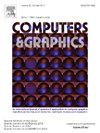Multi-Level Cross-Attention Point Cloud Completion Network
IF 2.5
4区 计算机科学
Q2 COMPUTER SCIENCE, SOFTWARE ENGINEERING
引用次数: 0
Abstract
Sensors often acquire point cloud data that is sparse and incomplete due to limitations in resolution or occlusion. Therefore, it is essential for practical applications to reconstruct the original shape from the incomplete point cloud. However, the existing methods based on Transformer architecture fail to make full use of the cross-attention mechanism to extract and fuse the features of points and the relationship between points, leading to a deficiency in detailed feature representation. In this paper, we present Multi-Level Cross-Attention Point Cloud Completion Network (MLCANet), which leverages the multi-level features of point clouds and their feature associations to optimize the generation of points. First, MLCANet enhances the features of the point cloud through Multi-Scale Feature Enhancement Cross-Attention (MSFECA) within the encoder. This approach facilitates interaction between channel and spatial dimension information derived from both low-resolution and high-resolution point clouds. Second, we propose Structural Similarity Cross-Attention (SSCA) in the decoder to learn prior knowledge from partial point clouds, thereby improving detail recovery. Third, we present an Augmented Affiliation Transformation (AAT) designed to correct positional discrepancies between partial and missing points. Our experiments demonstrate the effectiveness of our method for completing several challenging point cloud data both qualitatively and quantitatively, with the Chamfer Distance (CD) reduced by at least 3.1% and 4.7% compared to existing methods on the ShapeNet-Part and ModelNet40 datasets.

多层次交叉关注点云补全网络
由于分辨率或遮挡的限制,传感器获取的点云数据往往是稀疏和不完整的。因此,在实际应用中,从不完整的点云中重建原始形状是非常必要的。然而,现有的基于Transformer架构的方法没有充分利用交叉注意机制来提取和融合点的特征和点之间的关系,导致缺乏详细的特征表示。本文提出了多层次交叉关注点云补全网络(MLCANet),该网络利用点云的多层次特征及其特征关联来优化点的生成。首先,MLCANet通过编码器内部的多尺度特征增强交叉注意(MSFECA)来增强点云的特征。该方法促进了来自低分辨率和高分辨率点云的通道和空间维度信息之间的交互。其次,我们在解码器中提出了结构相似交叉注意(SSCA),从部分点云中学习先验知识,从而提高细节恢复。第三,我们提出了一种增强关联变换(AAT),旨在纠正部分点和缺失点之间的位置差异。我们的实验证明了我们的方法在定性和定量地完成几个具有挑战性的点云数据方面的有效性,与ShapeNet-Part和ModelNet40数据集上的现有方法相比,倒角距离(CD)至少减少了3.1%和4.7%。
本文章由计算机程序翻译,如有差异,请以英文原文为准。
求助全文
约1分钟内获得全文
求助全文
来源期刊

Computers & Graphics-Uk
工程技术-计算机:软件工程
CiteScore
5.30
自引率
12.00%
发文量
173
审稿时长
38 days
期刊介绍:
Computers & Graphics is dedicated to disseminate information on research and applications of computer graphics (CG) techniques. The journal encourages articles on:
1. Research and applications of interactive computer graphics. We are particularly interested in novel interaction techniques and applications of CG to problem domains.
2. State-of-the-art papers on late-breaking, cutting-edge research on CG.
3. Information on innovative uses of graphics principles and technologies.
4. Tutorial papers on both teaching CG principles and innovative uses of CG in education.
 求助内容:
求助内容: 应助结果提醒方式:
应助结果提醒方式:


